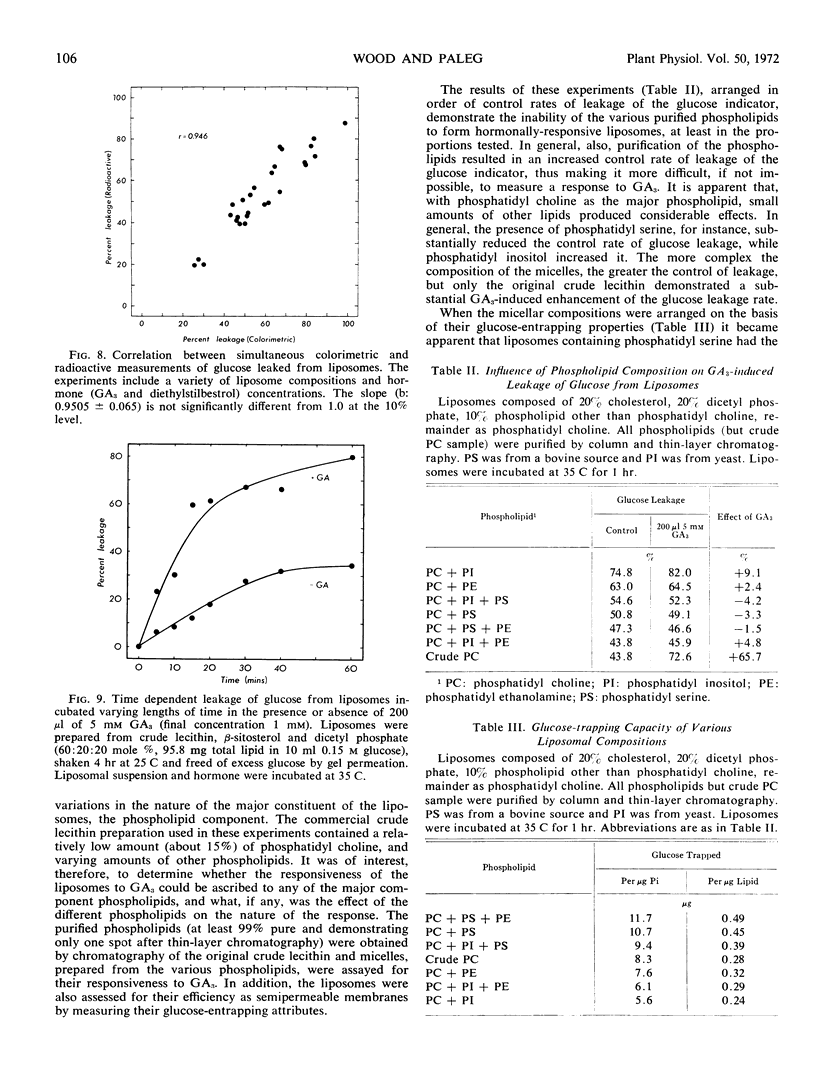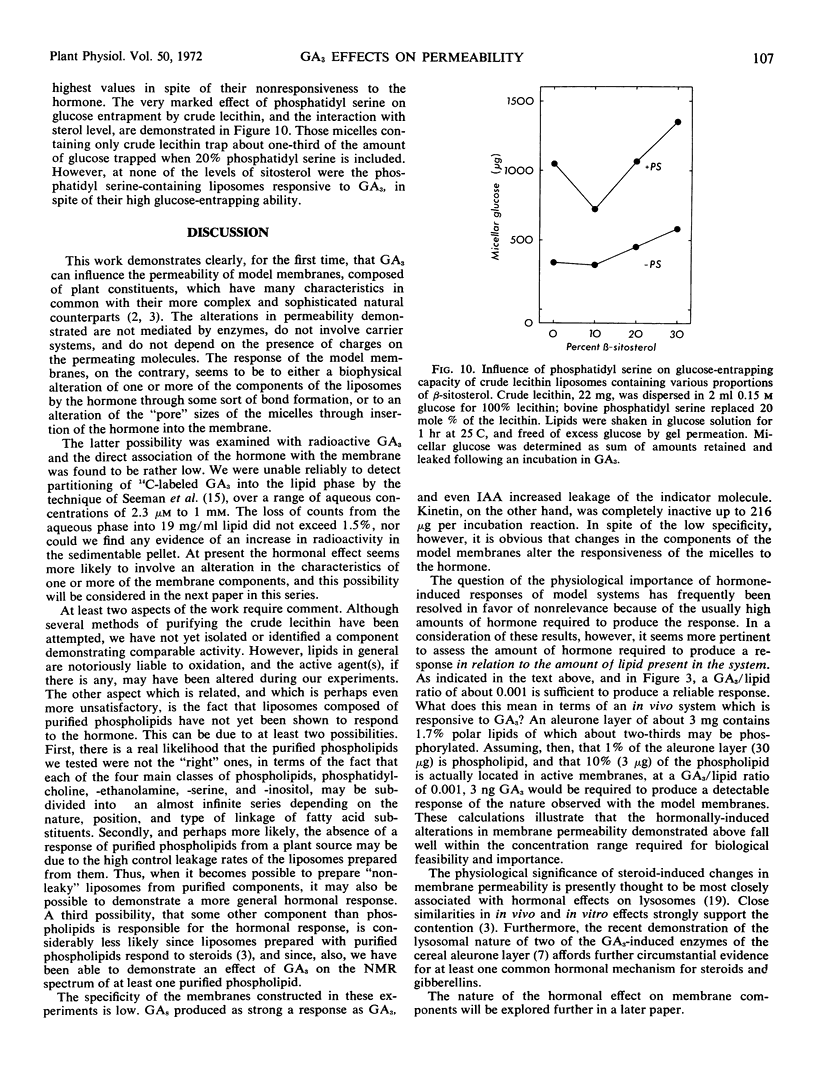Abstract
Gibberellic acid increases the permeability of model membranes composed of various plant-source lipids, a sterol, and dicetyl phosphate. As a result of hormone treatment, the flux of uncharged molecules such as glucose or sucrose, or charged ions such as chromate, through the model membranes (liposomes or micelles) is increased. The revelance of this finding to the in vivo effects of the hormone is briefly discussed.
Full text
PDF





Selected References
These references are in PubMed. This may not be the complete list of references from this article.
- Appelqvist L. A., Boynton J. E., Stumpf P. K., von Wettstein D. Lipid biosynthesis in relation to chloroplast development in barley. J Lipid Res. 1968 Jul;9(4):425–436. [PubMed] [Google Scholar]
- BARTLETT G. R. Phosphorus assay in column chromatography. J Biol Chem. 1959 Mar;234(3):466–468. [PubMed] [Google Scholar]
- Bangham A. D., Standish M. M., Miller N. Cation permeability of phospholipid model membranes: effect of narcotics. Nature. 1965 Dec 25;208(5017):1295–1297. doi: 10.1038/2081295a0. [DOI] [PubMed] [Google Scholar]
- Bangham A. D., Standish M. M., Weissmann G. The action of steroids and streptolysin S on the permeability of phospholipid structures to cations. J Mol Biol. 1965 Aug;13(1):253–259. doi: 10.1016/s0022-2836(65)80094-8. [DOI] [PubMed] [Google Scholar]
- Fluck D. J., Henson A. F., Chapman D. The structure of dilute lecithin-water systems revealed by freeze-etching and electron microscopy. J Ultrastruct Res. 1969 Dec;29(5):416–429. doi: 10.1016/s0022-5320(69)90063-x. [DOI] [PubMed] [Google Scholar]
- Grunwald C. Effect of sterols on the permeability of alcohol-treated red beet tissue. Plant Physiol. 1968 Apr;43(4):484–488. doi: 10.1104/pp.43.4.484. [DOI] [PMC free article] [PubMed] [Google Scholar]
- Heap R. B., Symons A. M., Watkins J. C. An interaction between oestradiol and progesterone in aqueous solutions and in a model membrane system. Biochim Biophys Acta. 1971 Apr 13;233(2):307–314. doi: 10.1016/0005-2736(71)90328-2. [DOI] [PubMed] [Google Scholar]
- Kuiper P. J. Lipids in alfalfa leaves in relation to cold hardiness. Plant Physiol. 1970 Jun;45(6):684–686. doi: 10.1104/pp.45.6.684. [DOI] [PMC free article] [PubMed] [Google Scholar]
- Seeman P., Roth S., Schneider H. The membrane concentrations of alcohol anesthetics. Biochim Biophys Acta. 1971 Feb 2;225(2):171–184. doi: 10.1016/0005-2736(71)90210-0. [DOI] [PubMed] [Google Scholar]
- Sessa G., Weissmann G. Effects of four components of the polyene antibiotic, filipin, on phospholipid spherules (liposomes) and erythrocytes. J Biol Chem. 1968 Aug 25;243(16):4364–4371. [PubMed] [Google Scholar]
- Sessa G., Weissmann G. Phospholipid spherules (liposomes) as a model for biological membranes. J Lipid Res. 1968 May;9(3):310–318. [PubMed] [Google Scholar]
- Singhal R. L., Vijayvargiya R., Ling G. M. Cyclic adenosine monophosphate: andromimetic action on seminal vesicular enzymes. Science. 1970 Apr 10;168(3928):261–263. doi: 10.1126/science.168.3928.261. [DOI] [PubMed] [Google Scholar]
- Szego C. M., Seeler B. J., Steadman R. A., Hill D. F., Kimura A. K., Roberts J. A. The lysosomal membrane complex. Focal point of primary steroid hormone action. Biochem J. 1971 Jul;123(4):523–538. doi: 10.1042/bj1230523. [DOI] [PMC free article] [PubMed] [Google Scholar]
- Trémolières A., Lepage M. Changes in Lipid Composition during Greening of Etiolated Pea Seedlings. Plant Physiol. 1971 Feb;47(2):329–334. doi: 10.1104/pp.47.2.329. [DOI] [PMC free article] [PubMed] [Google Scholar]


